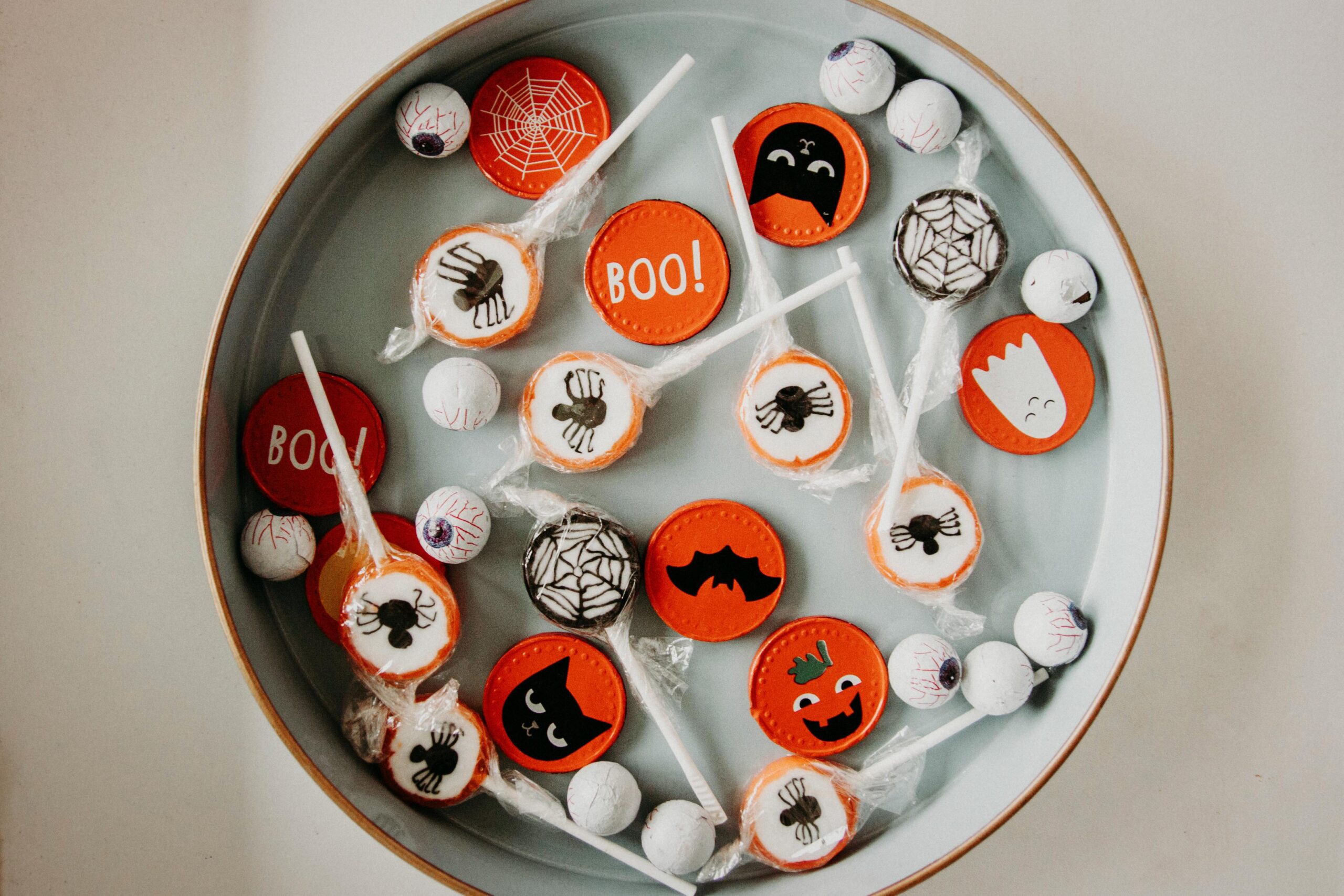By the time parents arrive home from work on Trick or Treat night, it seems like the witching
hour is in full swing. The kids are so excited for the evening’s events that they have magically
changed into their costumes and are eagerly anticipating the night’s events, not caring about
any plans you have made for dinner.
Your mind is quickly assaulted by the following questions:
- “Should I make my children eat dinner or is it not worth the battle?”
- “How many houses equate to an adequate candy supply?”
- “What about the increase in childhood obesity?”
Halloween is the first of the sugar-focused holidays, which last until Valentine’s Day. You
certainly do not need all this candy around the house. Can you throw half of it out when your
children are not looking? Do your dentist’s kids go trick or treating?
It is important to remember that one night of trick-or-treating does not make an overweight
child or a bad parent. Here are a few simple suggestions to help you get through Halloween
night and the other 364 days that follow.
- Have a plan to start the night
A group of hungry, dehydrated, excited goblins is a frightening picture for any parent! Make a
plan for dinner and trick-or-treat start time, and ask for your children’s input. Agree on a
nutritious dinner – perhaps with a Halloween theme, and plan it ahead of time with your
children’s help. Let them know that you will eat early on Halloween night so that they will have
all the energy needed for a successful Trick-or-Treat night.
Make sure they drink enough fluid. Children can get overheated in Halloween costumes,
especially when it is combined with running from house to house throughout your
neighborhood. - Set limits in advance
Ask your children to help you decide on the route you will take, how many doors you will knock
on, and what hour they will turn back into “pumpkins.” Having an end goal will help you avoid
the “just one more” or “but we have not gone to…” meltdown that persists all the way home. - Agree on a candy consumption limit
Agree on how much candy your children can eat on Trick or Treat night and each day
thereafter. You may want to make a similar confidential agreement with yourself. Note:
“unlimited access” or “until the chocolate is gone” is not a good plan. - Provide healthy snacks
Keep healthy between-meal snacks in view and accessible. A bowl full of juicy red apples,
bananas, or seasonal fruit is a better centerpiece than Skittles®, M&M’s®, and Tootsie Rolls®.
Keep the candy out of sight. Assign a kids’ shelf in your refrigerator and fill it with low-fat
yogurt, low-fat cheese cut in interesting shapes, and fresh-cut vegetables. - Teach and model moderation
Do not give candy more status than it deserves. In some instances, the more something is
forbidden or overly restricted, the more desirable it becomes. Teach and model moderation. All
foods can fit, if we are reasonable about the amount and frequency. - Do not attach emotions to candy
Try not to use candy to reward, bribe, punish, or convey love. By attaching emotions to certain
foods, you may inadvertently set the stage for disordered eating in the future, including
undereating, anorexia, overeating, and obesity. - Begin some new family rituals
Try to take the focus of the holiday away from the candy. Make it a time to begin new family
rituals, such as stuffing a scarecrow full of leaves for the front porch. Carve pumpkins and roast
the seeds. Hold an annual scavenger hunt for fall items, such as acorns, pinecones, woolly
caterpillars, animal tracks, and colorful leaves. Begin a new photo album that holds pictures of
Halloween celebrations, past and present. After trick-or-treating, collect the extra candy and
box it up to donate to military troops or participate in a Buyback program through a dentist’s
office or local business. - Keep it safe
Above all, have a safe and fun Halloween. Your children are only small for a short while!

